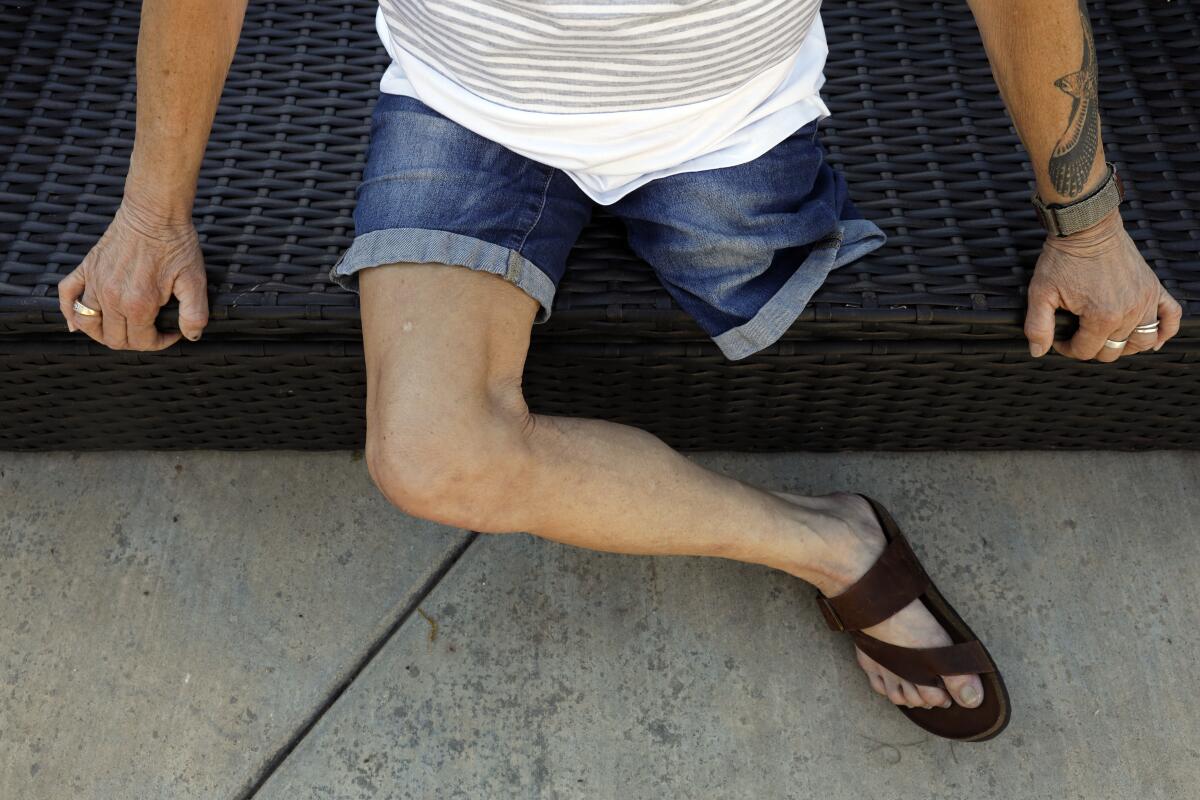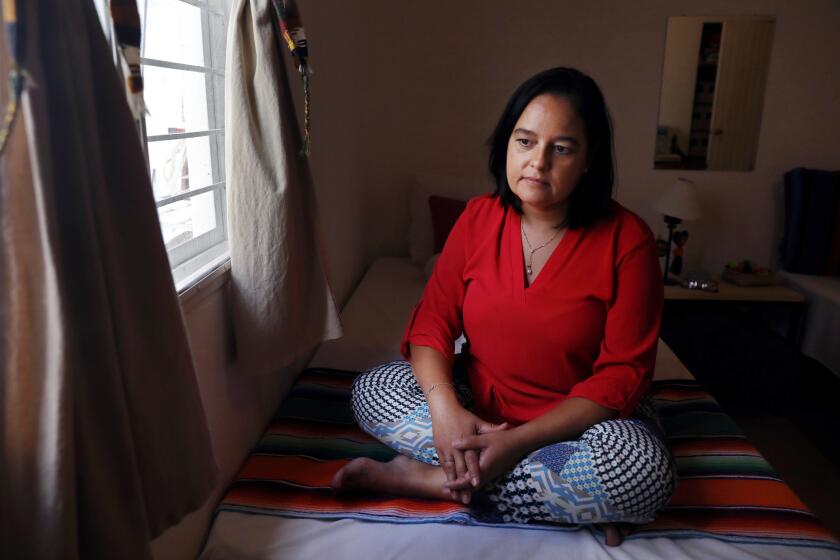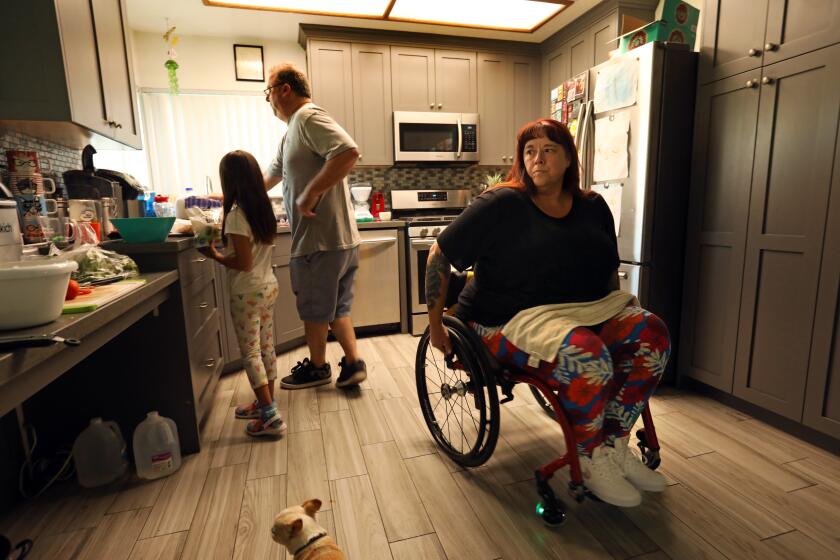California’s malpractice payouts would rise under a deal to avoid a costly ballot fight

- Share via
SACRAMENTO — Cash payments in California medical malpractice cases would go up for the first time in nearly five decades under a deal between rival interest groups announced Wednesday that avoids a costly battle at the ballot box in November.
The overhaul to the long-standing Medical Injury Compensation Reform Act of 1975, known as MICRA, will be outlined in a bill scheduled to be introduced Wednesday in the California Legislature, with the deal requiring that it be signed into law by Gov. Gavin Newsom before June 28 — the deadline for removing a related measure from the Nov. 8 statewide ballot.
“I never thought this would happen,” said trial attorney Nick Rowley, who bankrolled the effort to gather voter signatures for placing a measure on the ballot. “I never thought we would work out a legislative solution.”
California’s medical malpractice cap imposes a $250,000 limit on how much patients can be awarded for damages that are not directly related to medical bills and economic losses, such as lost earnings. But critics have argued that a cap on awards for pain and suffering severely limits how much injured children, retirees and stay-at-home parents can receive while also deterring attorneys from taking on the complex cases.
The deal reached after several weeks of intense negotiations between attorneys and doctors groups would raise the legal cap on pain and suffering awards to $350,000 beginning Jan. 1. That amount would gradually increase over a 10-year period to $750,000.
In cases involving a patient’s death, the cap on pain and suffering awards would increase to $500,000 on Jan. 1 and would grow to $1 million over the next decade. After that, the cap would be adjusted annually by a 2% cost of living increase.
Then-Gov. Jerry Brown signed MICRA into law in 1975 amid concerns that doctors were retiring or leaving California due to rising insurance premiums, blamed on the size of malpractice awards. Patient groups have long argued that MICRA needs to be updated, pointing out that if the cap had been annually adjusted for inflation, it would now be $1.3 million.
The California Medical Board has reinstated a number of doctors who sexually abused patients, a Times investigation found.
The agreement will be contained in amendments to Assembly Bill 35 and co-authored by Assemblymember Eloise Gómez Reyes (D-Grand Terrace) and state Sen. Tom Umberg (D-Orange).
“This agreement signals the end to one of the most longstanding battles in California politics, and strikes a fair balance protecting patients, while ensuring that physicians and other medical professionals can treat patients without fear of financial ruin,” Newsom said in a written statement. “This is an important victory for the stability and health of our healthcare system, and for patients across California.”
Current law provides a single payment of no more than $250,000, regardless of how many healthcare providers are found to be negligent. Under the newly amended AB 35, an injured patient could be eligible for two separate payments at the increased amount — with one pot of money for a doctor’s negligence and another for that of a hospital. In some rare cases, a third payment would be allowed for pain and suffering involving a separate, unaffiliated provider, bringing the potential total award to $1.5 million.
“With this deal, we can finally put this issue aside,” said Jodi Hicks, president of Planned Parenthood of California, part of a coalition that was fighting the ballot measure due to the potential financial impact on its community clinics and providers. “The compromise ensures we are keeping healthcare affordable and accessible, which is a priority for us, while balancing the appropriate compensation for Californians who experience healthcare-related injuries.”
Scott Olsen, one of three individuals who filed the ballot measure, said the increased cap comes too late for his own family but will help others who suffer from medical malpractice. A jury awarded Olsen $7 million in compensation for pain and suffering after his son suffered lifetime blindness and disability due to medical negligence in 1992. But the state’s decades-old cap meant the jury award was immediately reduced to $250,000.
Serious malpractice leading to the loss of limbs, paralysis and the deaths of patients wasn’t enough for the California Medical Board to stop these bad doctors from continuing to practice medicine.
“It’s high time that the California Legislature and all parties recognize that there should not be a fixed, one-size-fits-all cap on human suffering and that survivors of medical negligence, regardless of their income level, deserve legal representation and accountability,” Olsen said.
AB 35 sidesteps what would have otherwise been a bruising and expensive political fight. The ballot measure, if approved by voters, would have required non-economic damages in medical malpractice lawsuits to be tied to inflation dating back to 1975 while allowing judges and juries to award damages above the cap in cases where a person dies or is permanently and physically impaired, disfigured or disabled.
The decision to withdraw the measure in favor of action by the Legislature is notable. Prior to 2014, a statewide initiative was required to be on the ballot once voter signatures had been submitted and verified. Lawmakers changed the rules in an effort to spark more compromises instead of costly and often confusing political campaigns.
Efforts to increase the malpractice cap in 2014 almost became the first test of the new ballot measure rules, but a compromise failed and a MICRA overhaul ballot measure, Proposition 46, was overwhelmingly rejected by voters.
In the eight years since the change in state election law, only two high-profile proposals have been sorted out through a compromise at the state Capitol: a 2016 effort to boost California’s minimum wage and a 2018 law that sharply expanded privacy protections over consumer data. Neither of those agreements, though, represented a political and public policy divide that was as fierce or long-lasting as the debate over the cap on medical malpractice awards.
“After decades of treating patients unfairly, California is finally opening the door of justice for those suffering from medical negligence,” said Craig Peters, president of Consumer Attorneys of California. “We are thrilled patients are going to get a fair shake at compensation for their injuries.”
Jamie Court, president of the advocacy group Consumer Watchdog, said the current political climate is different than in 2014. He said stories in The Times detailing the lax punishment of doctors accused of repeated acts of negligence or sexual abuse, along with an increasing awareness of maternal mortality rates, have “raised the public consciousness.”
For the record:
6:18 p.m. April 27, 2022An earlier version of this article misspelled the name of the president of the advocacy group Consumer Watchdog as Jaime Court. His name is Jamie Court.
Patients say the cap on pain and suffering awards has made lawyers less willing to take their cases, which, coupled with poor oversight by the state’s medical board, leaves them without recourse when a doctor’s errors lead to catastrophic injury or death.
In December, a Times investigation found that since 2013, the Medical Board of California has reinstated 10 physicians who had lost their licenses for sexual misconduct. They included two doctors who abused teenage girls and one who beat two female patients when they reported him for sexually exploiting them. In addition, The Times found that the board had consistently allowed doctors accused of negligence to keep practicing and harming patients, at times leaving them dead, paralyzed, brain-damaged or missing limbs.
Lawmakers are currently weighing several legislative proposals to overhaul the state medical board, including a bill to permanently ban doctors convicted of sexually abusing patients and another that would change the makeup of the medical board to a public-member majority.
“When you put it all together, that created a perfect storm for this deal,” Court said. “The reality is that doctors don’t want bad doctors tarnishing their image or profession. This was a recognition that something needed to change. It’s not everything the initiative would have done, but hopefully, it’s a new era of medical accountability.”
Times staff writer John Myers contributed to this report.
More to Read
Sign up for Essential California
The most important California stories and recommendations in your inbox every morning.
You may occasionally receive promotional content from the Los Angeles Times.













